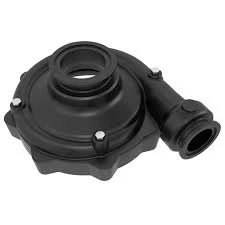Mobile:+86-311-808-126-83
Email:info@ydcastings.com
Exploring the Techniques and Benefits of Surface Casting in Modern Manufacturing
Surface Casting A Comprehensive Overview
Surface casting is an essential technique in the field of metalworking, particularly in the manufacturing of complex parts and components. This method allows for the creation of intricate designs and shapes that would be difficult or impossible to achieve with traditional machining processes. In this article, we will explore the fundamentals of surface casting, its advantages, various applications, and the future potential of this innovative approach.
What is Surface Casting?
Surface casting is a subtype of casting processes where molten metal is poured into a mold that has a pre-defined surface profile. Unlike traditional casting methods, which often involve a deep cavity, surface casting emphasizes the creation of components with high surface detail and reduced thickness. This technique can be employed with various materials, including aluminum, zinc, and even some types of polymer-based compounds.
Advantages of Surface Casting
One of the primary advantages of surface casting is its ability to produce highly detailed and complex shapes. This feature is particularly valuable in industries such as aerospace and automotive, where components often need to meet strict performance and aesthetic criteria. The precision achieved through surface casting reduces the need for extensive machining and finishing processes, resulting in lower production costs and shorter lead times.
Another significant benefit is the reduction of material waste. Traditional machining methods often result in considerable scrap material, as excess metal is cut away to achieve the desired shape. In contrast, surface casting utilizes the exact amount of material needed for the final product, leading to a more sustainable manufacturing approach.
Applications of Surface Casting
surface casting

Surface casting has found a wide range of applications across various industries. In aerospace, it is used to manufacture lightweight components that do not compromise strength and durability. For instance, intricate structural parts of an aircraft that withstand high levels of stress can be effectively created using surface casting techniques.
In the automotive industry, surface casting plays a critical role in producing engine components, housings, and even decorative trim elements. The ability to achieve complex geometries allows manufacturers to optimize performance while also enhancing the aesthetic appeal of vehicles.
Additionally, the electronics sector benefits from surface casting, particularly in creating housings for devices where space constraints and design intricacies are paramount. This method enables the production of lightweight and compact components that can accommodate modern technological advancements.
The Future of Surface Casting
As technology advances, the potential for surface casting continues to expand. Innovations in materials science, such as the development of new alloys and composites, are likely to enhance the capabilities of surface casting. Additionally, improvements in 3D printing technology could further streamline the casting process, allowing for on-demand production and customization.
Moreover, sustainability concerns are driving the industry toward more eco-friendly practices. Surface casting’s lower material waste and energy consumption make it a favorable option in this regard. Manufacturers are increasingly looking for ways to implement surface casting in a circular economy framework, focusing on recycling and repurposing materials efficiently.
Conclusion
Surface casting represents a significant advancement in manufacturing techniques, offering numerous advantages over traditional methods. Its ability to create complex and precise components while minimizing material waste makes it an attractive option across various industries, including aerospace, automotive, and electronics. As technology progresses, we can expect surface casting to evolve further, solidifying its position as a pivotal technique in the future of manufacturing. Through continuous innovation and an emphasis on sustainability, surface casting will undoubtedly play a critical role in meeting the challenges of modern production demands.
-
Why Should You Invest in Superior Pump Castings for Your Equipment?NewsJun.09,2025
-
Unlock Performance Potential with Stainless Impellers and Aluminum End CapsNewsJun.09,2025
-
Revolutionize Your Machinery with Superior Cast Iron and Aluminum ComponentsNewsJun.09,2025
-
Revolutionize Fluid Dynamics with Premium Pump ComponentsNewsJun.09,2025
-
Optimizing Industrial Systems with Essential Valve ComponentsNewsJun.09,2025
-
Elevate Grid Efficiency with High-Precision Power CastingsNewsJun.09,2025











